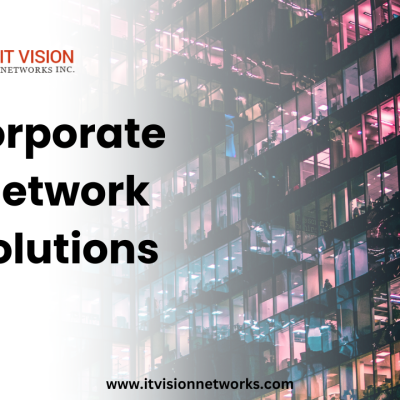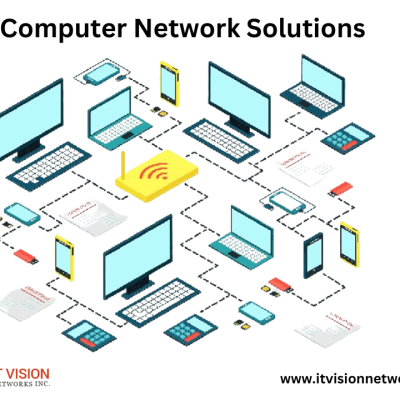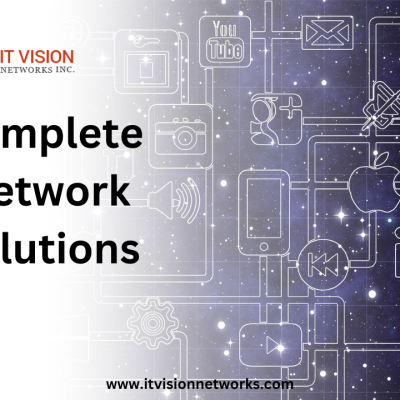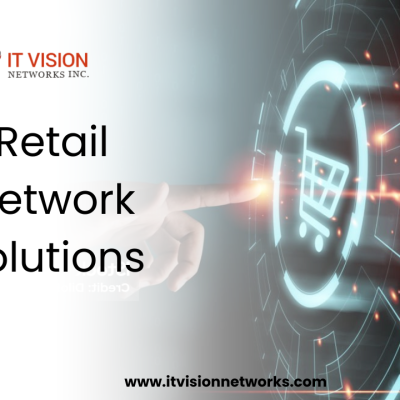It’s essential to understand the specific requirements of your business, evaluate your current IT equipment needs, and forecast future growth to ensure that you have the right technology in place to support your operations. Determining the budget for your IT equipment is another critical step, as it involves analyzing your financial resources, considering long-term investment, and seeking cost-effective solutions that align with your business goals. Once you clearly understand your requirements and budget, it’s time to choose the right IT equipment. Researching different options, evaluating compatibility with existing systems, and considering scalability and flexibility are key factors. When sourcing your IT equipment, exploring reputable suppliers, considering refurbished options, and assessing warranty and support are essential strategies to remember. Once your IT equipment is in place, implementing seamless integration, training employees, and testing performance are crucial steps for successful deployment. And recognize how to manage the lifecycle of your IT equipment, scaling for future growth, ensuring compliance with regulations, and optimizing performance for maximum efficiency. This comprehensive guide will help you assess and meet your IT equipment needs based on your business size.
Assessing IT Equipment Needs
Understanding the business requirements is a crucial first step in assessing your IT equipment needs. By taking into account the specific demands of your industry and the nature of your operations, you can tailor your technology investments to support your business objectives best. This means evaluating what you need today and how those needs may evolve.
Evaluating your current IT infrastructure is essential for identifying gaps or improvement areas. Conducting an inventory of existing hardware, software, and networking capabilities will give you a clear picture of what is working well and what may need to be updated or replaced. This assessment provides valuable insights into where resources should be allocated to optimize performance and efficiency. Forecasting future growth allows you to anticipate potential changes in demand for IT equipment based on expansion plans or evolving market conditions. By aligning your technology investments with projected business growth, you can ensure your infrastructure remains scalable and adaptable. This forward-thinking approach minimizes the risk of outgrowing your current setup and enables seamless integration of new systems as needed.
Determining IT Equipment Budget
By analyzing your financial resources and considering long-term investments, you can ensure you are setting yourself up for success. This process allows you to explore cost-effective solutions while strategically deciding where to allocate funds.
It’s essential to approach this task with enthusiasm, as it enables you to tailor your IT equipment needs specifically to the requirements of your business size. As you seek out cost-effective solutions, consider each piece of equipment’s potential return on investment. With careful consideration and a forward-thinking mindset, determining your IT equipment budget can be exciting rather than daunting. By taking the time now to assess and plan for your IT equipment needs based on your business size, you are laying a solid foundation for future growth and success. Embrace this opportunity by seeking out innovative and affordable options that align with both short-term necessities and long-term goals.
Choosing the Right IT Equipment
Researching different options can be exhilarating as you explore all the innovative solutions available in today’s tech market. Evaluating compatibility with existing systems adds an element of intrigue to the decision-making process. It’s like solving a complex puzzle where each piece must fit seamlessly into place. This challenge is stimulating and rewarding as you find the perfect match for your current infrastructure. And let’s remember to consider scalability and flexibility – two essential factors that can make this experience genuinely exhilarating. The potential for growth and adaptability opens up new opportunities and horizons for your business, making every step of this journey an adventure worth embarking on.
IT Equipment Sourcing Strategies
When sourcing IT equipment for your business, exploring reputable suppliers is essential. Look for companies with a proven track record of high-quality products and reliable service. By partnering with established vendors, you can ensure you get the best value for your investment.
In addition to new equipment, consider exploring refurbished options as well. Refurbished equipment can be a cost-effective alternative without compromising on quality. Many reputable suppliers offer refurbished items with warranties and support, making them a viable option for businesses looking to save on costs without sacrificing performance.
Assessing warranty and support is also crucial when sourcing IT equipment. Review the terms and conditions of warranties offered by different suppliers and the level of ongoing support they provide. Choosing vendors who stand behind their products with robust warranty coverage and excellent customer service will give you peace of mind in knowing that your business needs are in good hands.
Implementing IT Equipment Solutions
Embarking on implementing new IT equipment solutions is an exciting endeavour for any business. It’s an opportunity to streamline processes, increase efficiency, and stay ahead of the competition. By carefully planning for seamless integration, companies can ensure a smooth transition and minimal disruption to daily operations.
Training employees on the new equipment brings a sense of excitement as they learn to leverage advanced technologies to enhance their productivity. Providing comprehensive training programs will empower staff members to embrace the changes confidently. This investment in employee development benefits the individual and contributes to the business’s overall success. Once the new equipment is in place, testing and monitoring performance becomes thrilling as businesses witness firsthand how these solutions make a tangible impact on their operations. Analyzing data and gathering feedback allows continuous improvement, ensuring that the chosen IT equipment meets all requirements and enhances day-to-day functionalities.
Managing IT Equipment Lifecycle
When managing your IT equipment’s lifecycle, staying on top of maintenance and support plans is essential. This ensures your technology runs smoothly and efficiently, minimizing downtime and maximizing productivity. By implementing regular maintenance schedules and reliable support systems, you can extend the lifespan of your equipment and reduce the risk of unexpected failures.
Upgrading or replacing obsolete equipment is another crucial aspect of managing your IT equipment lifecycle. As technology rapidly evolves, older devices can quickly become outdated and inefficient. By staying informed about new advancements in IT equipment, you can make strategic decisions about when to upgrade or replace existing hardware. This proactive approach helps keep your business competitive and ensures that your team has access to the latest tools they need to succeed. Data security is also a top priority when disposing of outdated IT equipment. Properly wiping sensitive data from devices before disposal is essential for protecting your business from potential security breaches. Whether you’re recycling old hardware or selling it off, taking the necessary precautions to safeguard sensitive information is a critical step in managing the end-of-life process for your IT equipment.
Scaling IT Equipment for Business Growth
Scaling your IT equipment is crucial for accommodating growth and expansion. By anticipating future capacity needs and adopting scalable solutions, you can ensure your business is well-equipped to handle increased demand.
Planning for technology advancements is also essential. As your business grows, so will the need for more advanced technology. By staying ahead of the curve and investing in cutting-edge equipment, you can position your business for success in a rapidly evolving digital landscape. So, whether you’re a small startup with big ambitions or an established enterprise looking to expand, scaling your IT equipment is critical in driving sustainable growth. By assessing your current and future needs and planning strategically, you can build a strong foundation for success.
IT Equipment Compliance and Regulations
Understanding industry standards is crucial regarding IT equipment compliance and regulations. It’s essential to stay updated on the latest requirements and best practices to meet industry standards. By doing so, you can ensure that your IT equipment is up to par with the expectations of your business size, thereby avoiding any potential fines or penalties.
Ensuring regulatory compliance should be a top priority for businesses of all sizes. Different industries have different regulations, so staying informed about these regulations is critical. From data management to environmental impact, being aware of IT equipment’s legalities can save you from headaches down the line and keep your operations running smoothly. Addressing data privacy and security concerns is paramount in today’s digital landscape. With cyber threats rising, businesses must prioritize safeguarding sensitive information by implementing secure IT equipment measures. By complying with data privacy and security regulations, your business can build trust with customers while protecting itself from potential breaches.
Conclusion
Maximizing the performance of your IT equipment is crucial for ensuring a smooth and efficient operation. By monitoring and analyzing usage patterns, you can identify areas where improvements can be made to optimize performance. This proactive approach allows you to avoid potential issues and keep your equipment running at its peak.
Implementing performance-tuning techniques can further enhance the efficiency of your IT equipment. Adjusting settings and configurations based on usage data helps fine-tune the performance to meet your business needs. This improves overall productivity and ensures that resources are utilized effectively, ultimately leading to cost savings in the long run. In addition to improving performance, optimizing energy efficiency is essential to managing IT equipment. You can reduce operational costs while minimizing environmental impact by implementing energy-saving measures such as power management tools and hardware upgrades. This dual benefit makes it a win-win situation for your business and the planet.
FAQs
When assessing your IT equipment needs, you should consider factors such as the number of employees, the type of work they do, the software and applications they use, and the future growth of your business.
To determine the appropriate IT equipment for your business size, you should evaluate your current and future needs, consider the scalability of the equipment, assess the compatibility with your existing systems, and consult with IT professionals if needed.
Standard IT equipment needs for small businesses include computers, laptops, servers, networking devices, printers, and software applications for essential business operations.
Typical IT equipment needs for medium-sized businesses may include more advanced servers, higher-performance networking devices, additional storage solutions, and specialized software applications based on the industry.
Large businesses should consider IT equipment needs such as enterprise-level servers, robust networking infrastructure, data centre solutions, advanced security systems, and customized software applications to meet their specific requirements.






